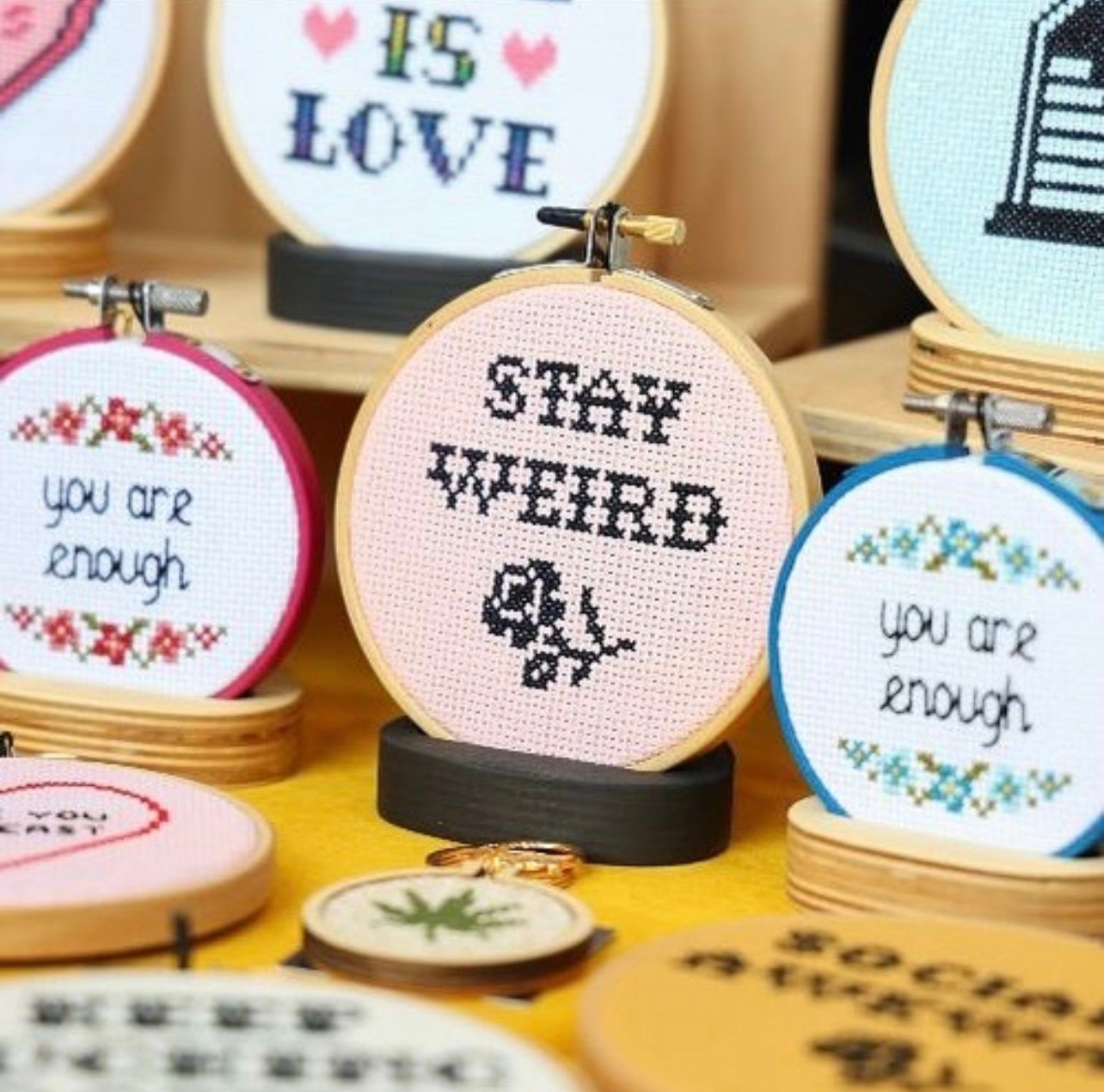Alright – so today we’ve got the honor of introducing you to Pamela Koons. We think you’ll enjoy our conversation, we’ve shared it below.
Hi Pamela, thanks for joining us today. Do you feel you or your work has ever been misunderstood or mischaracterized? If so, tell us the story and how/why it happened and if there are any interesting learnings or insights you took from the experience?
I think cross stitch and fiber arts as a whole are almost always misunderstood or mischaracterized. Close your eyes and envision cross stitch–if you’re a Millennial or older you probably think of Precious Moments or Disney characters, angels in picturesque landscapes or those brightly colored birth samplers that spell out your name, birthday, weight and height. Well, my work is nothing like these examples.
Historically, cross stitch and other fiber arts were regarded merely as “women’s work”, and therefore had little to no value, especially in the world of fine art. Traditionally cross stitch and other sewing skills were taught to girls of all classes. Middle to upper class girls were taught decorative embroidery to serve as both a learning tool, used as a mode of teaching young girls the alphabet, how to count and even recite bible verses, as well as to occupy their time and lure in a worthy husband. On the other hand, girls from lower class families were taught more technical embroidery skills such as mending, the simple backstitch to embroider family names on clothing and linens.
Almost every time I expose myself and my art to the public I get some sort of backlash about my medium–that it’s “too old,” (and not in the cool vintage kind of way) or that it’s for older generations or grandma’s, and that may be so. But for centuries fiber arts, especially cross stitch, was one of the only ways women from all social classes and of all races could artistically express themselves. As someone who holds a masters degree in art history, I couldn’t be more proud to carry on the tradition and history of this beloved medium.
If there’s one thing I would love for readers to take with them from this interview is a quote by one of my favorite art historians, Rozsika Parker, “To know the history of embroidery is to know the history of women.”
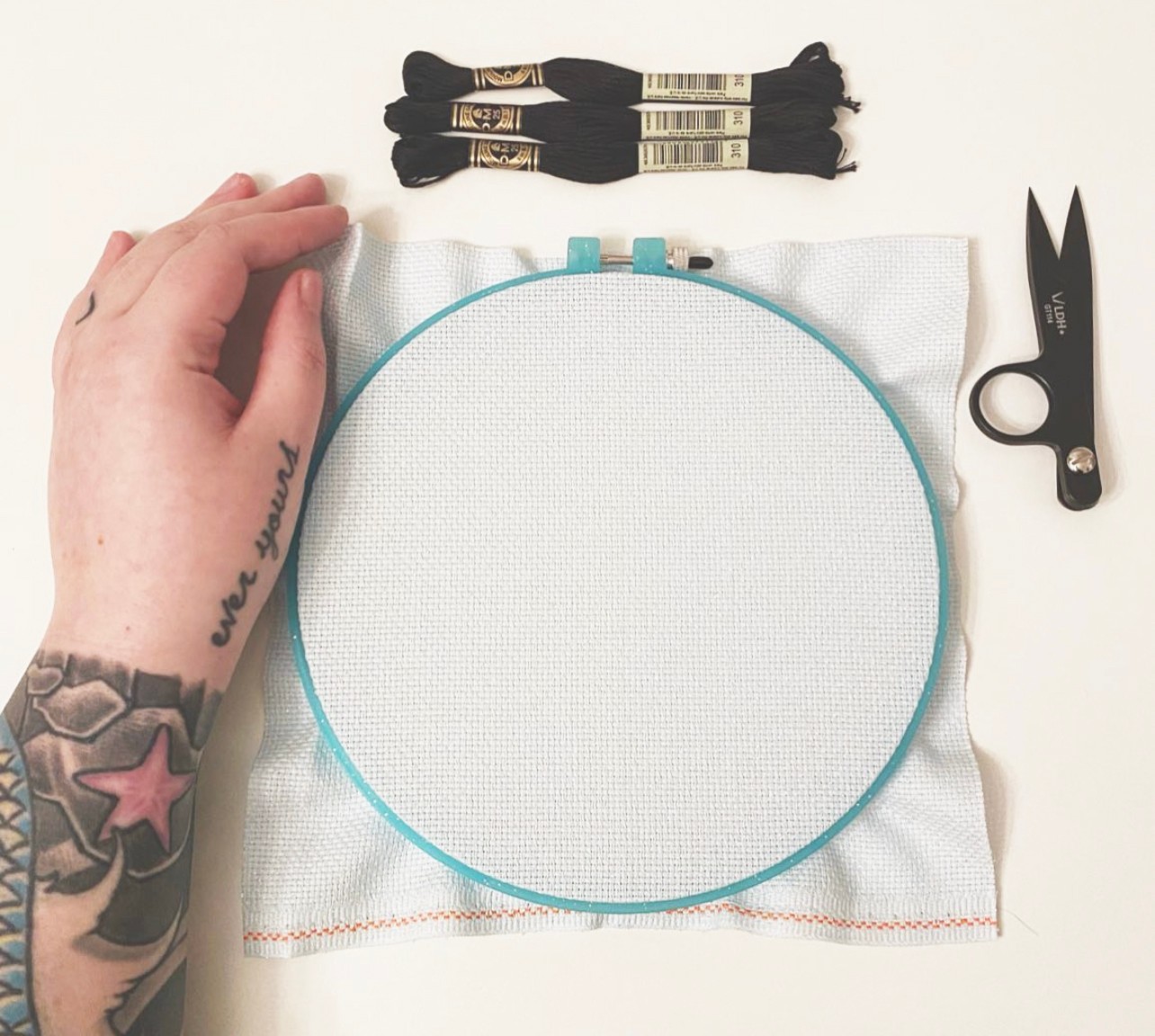

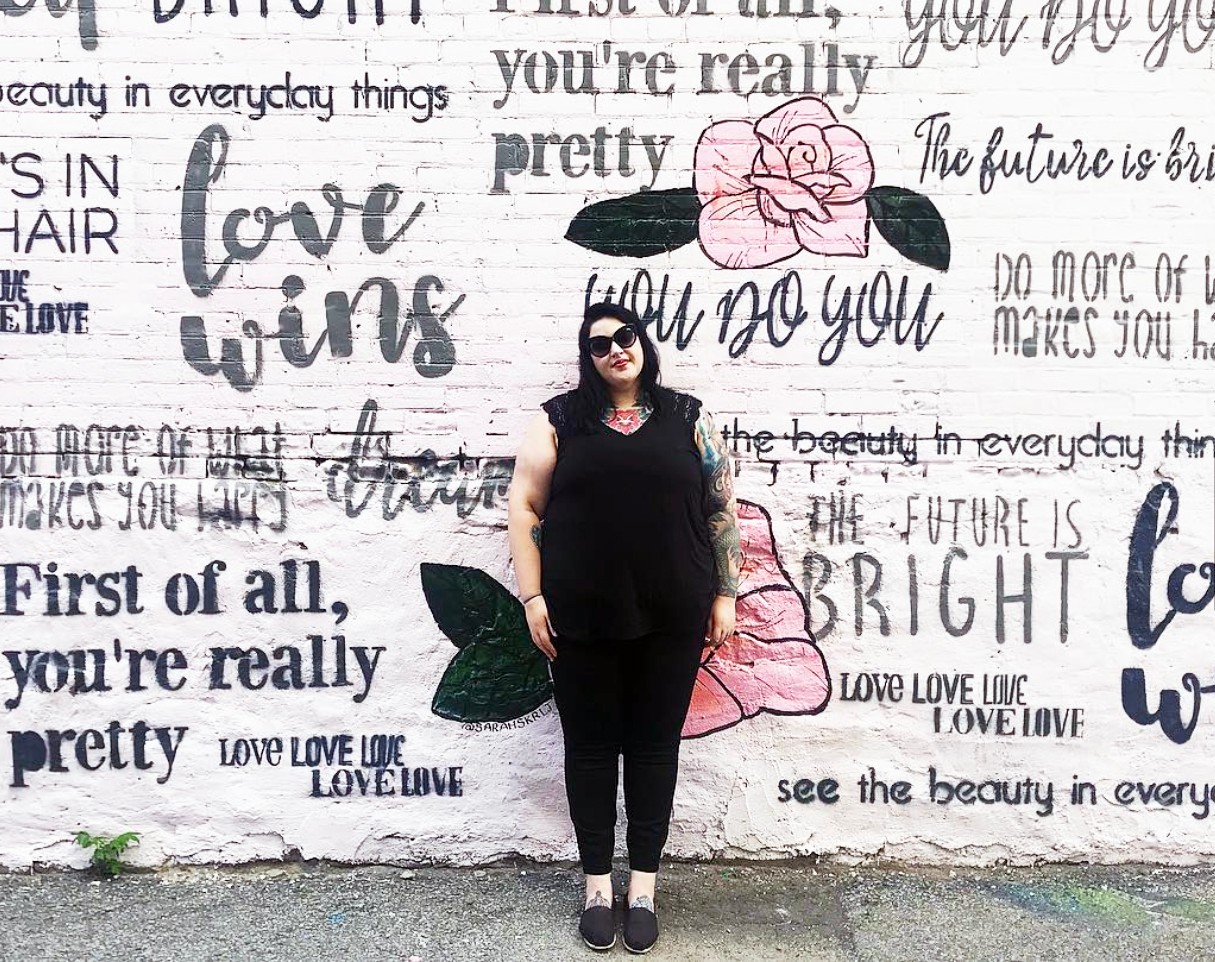
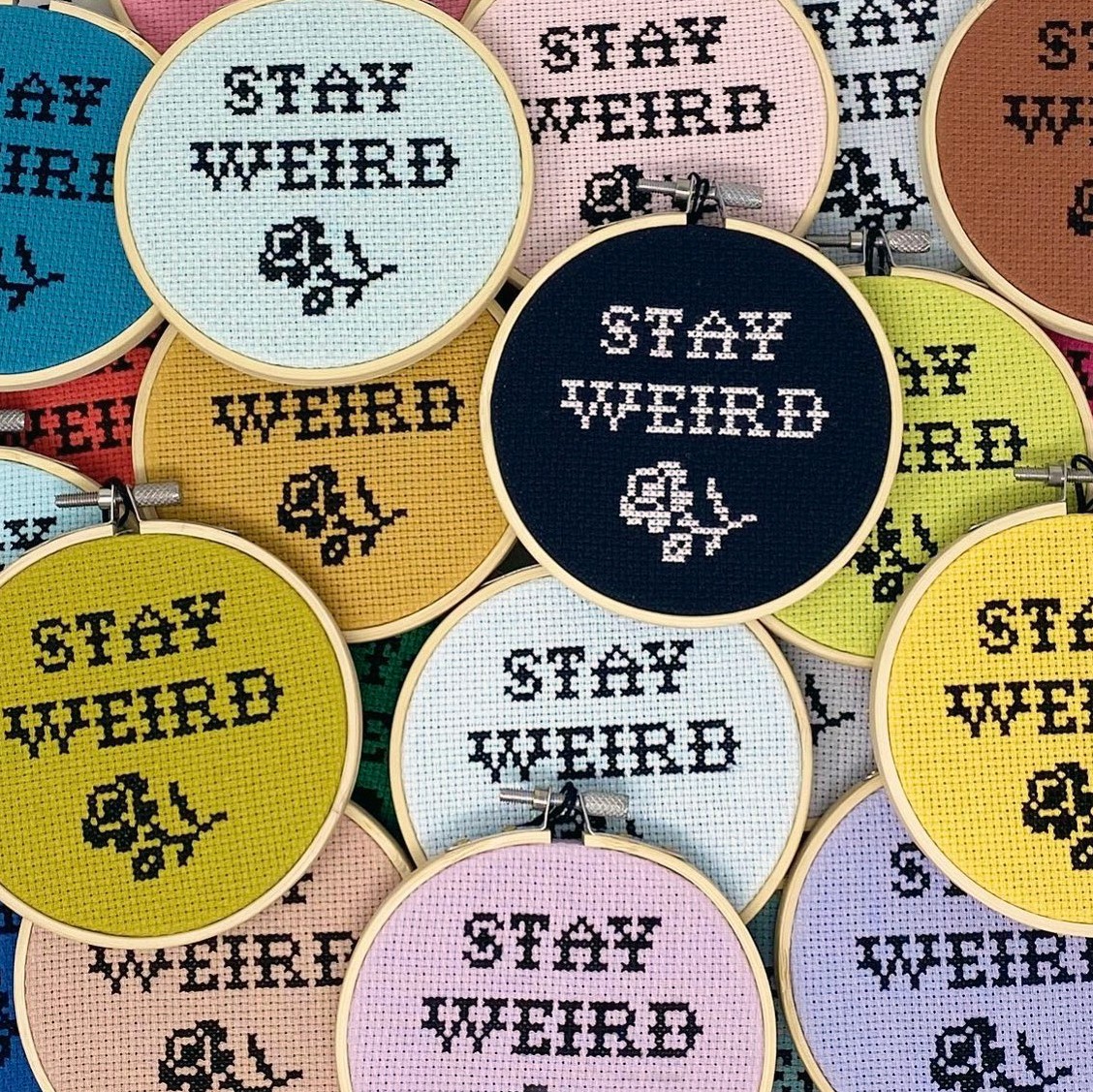
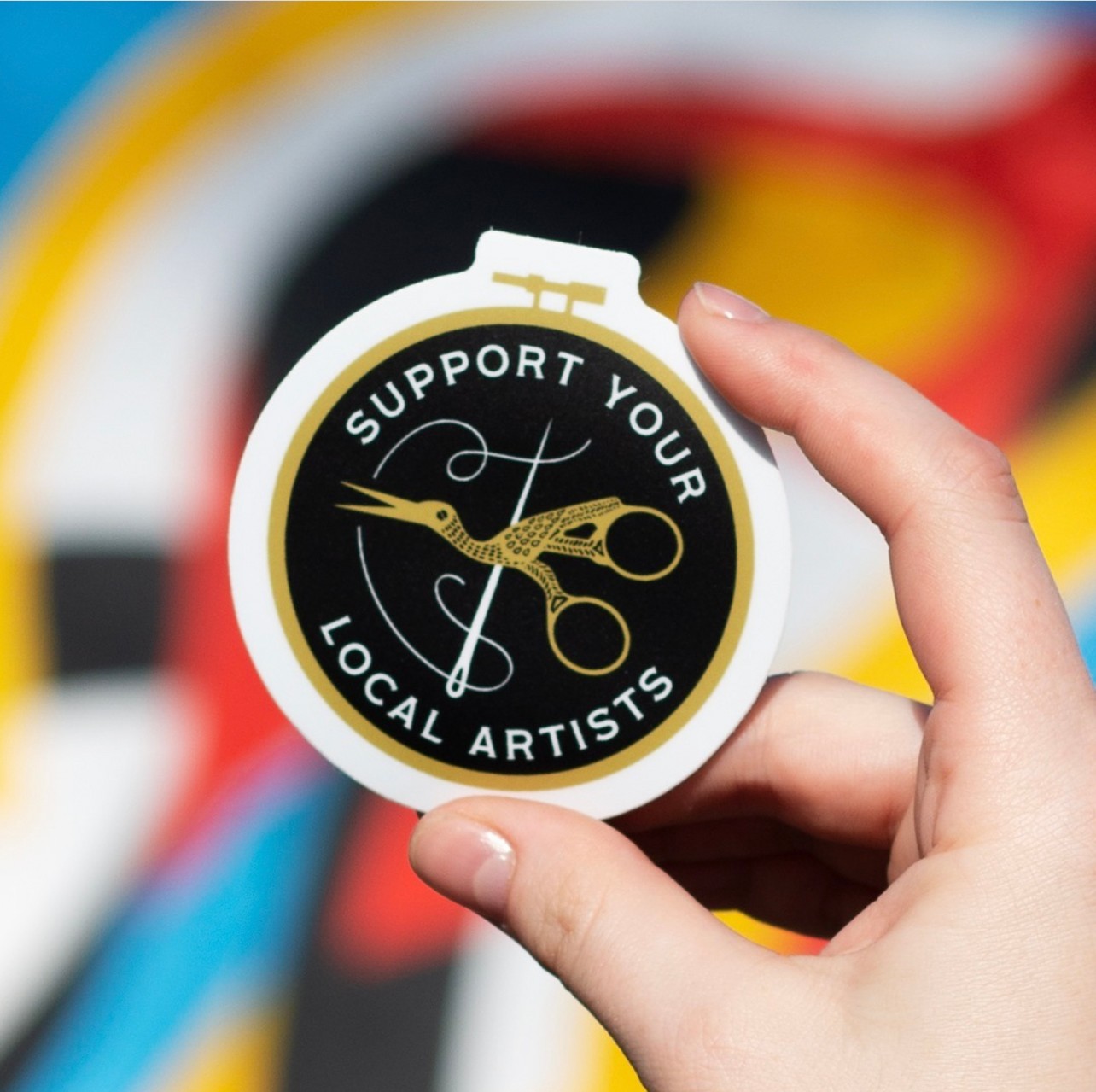
Pamela, before we move on to more of these sorts of questions, can you take some time to bring our readers up to speed on you and what you do?
I first learned how to cross stitch when I was living in NYC working on my masters degree in art history. I was living in a brand new city by myself, I was in a fiercely competitive program and I was dealing with a lot of stress and depression. Dealing with depression was nothing new to me, but my mental health started plummeting, making me think about things I hadn’t really thought about since I was a teenager. When I was a teenager I dealt with a lot of anger, hormones and suicidal ideation. My sister Jenni encouraged me to start painting as a way to get all of these feelings out of me and to express them in a more healthy way. This echoed through me while I was struggling in NYC and I was itching to find something creative (and lets face it–something that didn’t take up a whole bunch of space in my teeny tiny apartment), that remained to be as cathartic as painting was for me when I was a teen.
One day I was wandering around the city and I made my way to The Strand bookstore, one of my safe havens in the city and I stumbled on a cross stitch kit. The kit had everything to make an American Traditional tattoo styled heart, with “MOM” floating across in a banner. I scooped it up, paid, took it home, opened the kit and almost immediately gave up because it was all so foreign to me and didn’t come naturally to me like painting did. A few weeks later I was having an especially rough day and I said to myself today was the day I was going to learn how to cross stitch. I set myself up at my desk, grabbed my laptop and started watching YouTube videos to figure out exactly how to make a cross stitch. It wasn’t too long that I started stitching away at my very first cross stitch.
While challenging at first, cross stitching became meditative for me. It took my mind off school, off being depressed, the recent death of my grandfather, instead forcing me to count out stitches, completing small sections of color to move on to the next. It artistically challenged me and kept both my hands and mind busy. Cross stitching quickly became a daily exercise for me to practice grounding and was almost like a reward for me for making it through another day.
After a couple weeks of stitching everyday, it was finally finished. And it looked horrible. My stitches were jagged and didn’t lay down perfectly flat; I ran out of red thread and had to use a hot pink one instead; some stitches were missing and in some spots their were extra stitches; but I felt so accomplished and I was so proud of myself. The next day I picked up another kit and got right back to work. Already my skill was evolving and becoming more fine tuned with the second project–I was confident in counting stitches, I almost rarely had to look at the backside to figure out where to poke my needle through and that feeling of accomplishment just kept growing.
When I got comfortable with cross stitching, I soon after started making my own patterns with graphing paper and a pencil. I would stitch these as gifts for friends, family and loved ones, until I eventually started getting offers for people to purchase my crafts. From there I started selling patterns on Etsy, selling finished pieces from time to time between my studies. I even changed the path of my masters degree deciding to focus instead on 18th and 19th century decorative arts and painting, which included the whole realm of fiber arts.
A little more than a year and a half after I taught myself how to cross stitch, I had a really traumatic near-death experience in spring 2019 due to a recent, necessary surgery. It was really at that point that my perspective shifted and I then wanted to make my childhood dream of becoming an artist come true. After recovering I really started to hone in on my craft, trying to figure out what exactly my style was, what I wanted to communicate through my work. I was invited to start selling my work in person at art festivals, pop ups and markets. My Etsy and social media presence grew. And one year after the pandemic first began, I was able to make CryBaby Cross Stitch my full time job, as it remains to this day.
___
Since first beginning my little Etsy shop back in 2018, my brand and myself have grown substantially. What started out as selling low-grade cross stitch patterns online has turned into a collection of hand-stitched cross stitch art and my own merch line. I think it’s fair to say fiber arts has had a bit of a renaissance in recent years and a good half of today’s cross stitch designers have a subversive take on the medium. I’m surrounded by some truly talented artists in my little niche. But I like to think what sets me apart is my overall approach. I walk a fine line between low-brow vulgarity and a whole lot of self love. I create things that make folks laugh, that some folks will think but never say, while creating a space for self care, self love and self acceptance.
What do you think is the goal or mission that drives your creative journey?
My near death experience in spring of 2019 has really set me on my creative journey. As cliché as it sounds, it really made me confront death, what it means to no longer be here and the impression you make on people. While I love and still love art history and that journey I was on, I didn’t think I’d be able to leave quite the impression as I’m able to with my current path.
There’s really three main driving forces pushing me forward, even on the days I feel like I can’t go any further:
1. Myself. Hard work, no luck.
2. My nieces and nephews. I want to show them that their passions and dreams don’t have to stay on the back burner, that it is okay to go against the grain and not always choose the more “responsible” route.
3. My customers and fans. I’ve met so many wonderful folks throughout my career and have been humbled in so many ways.


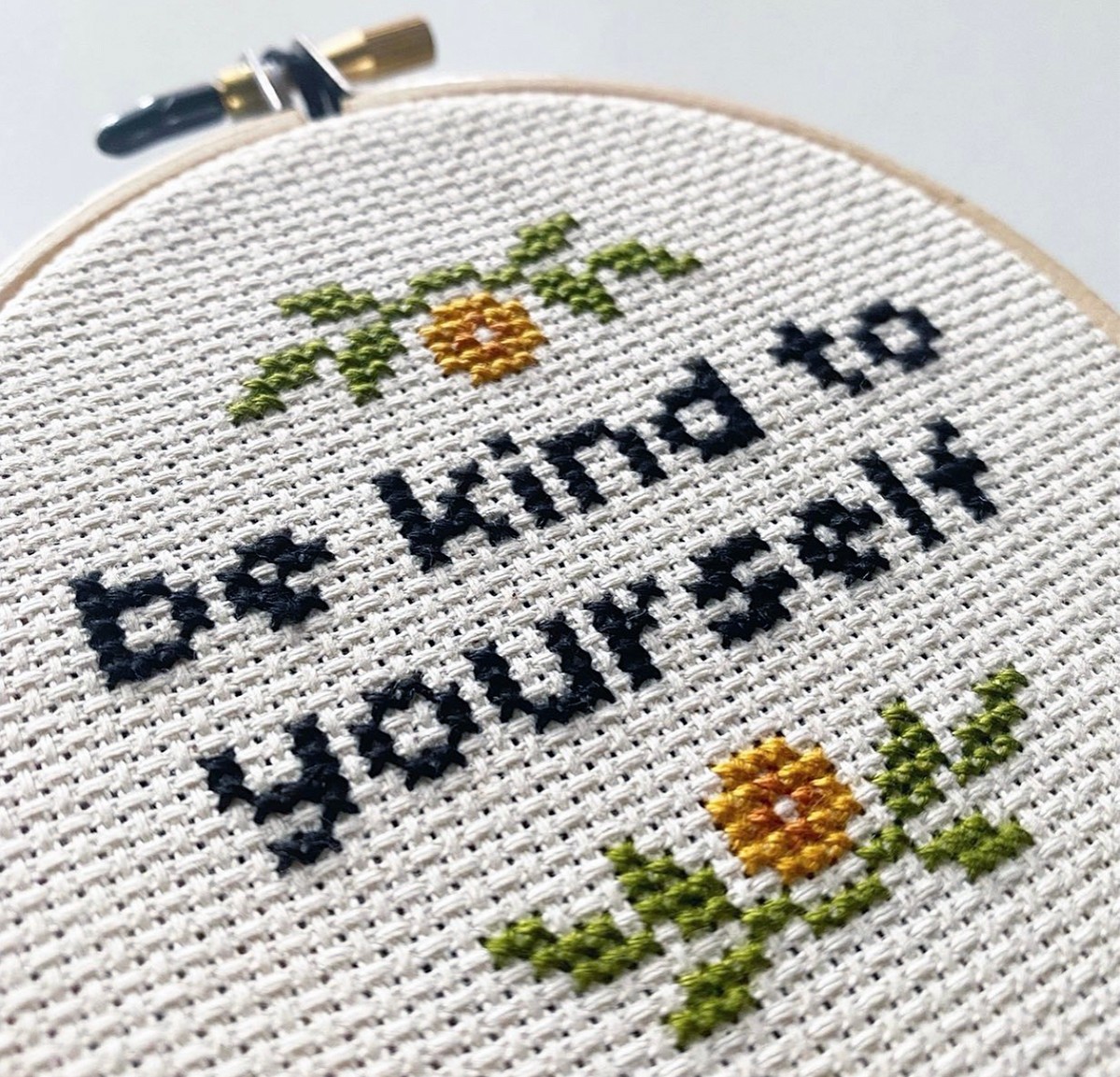

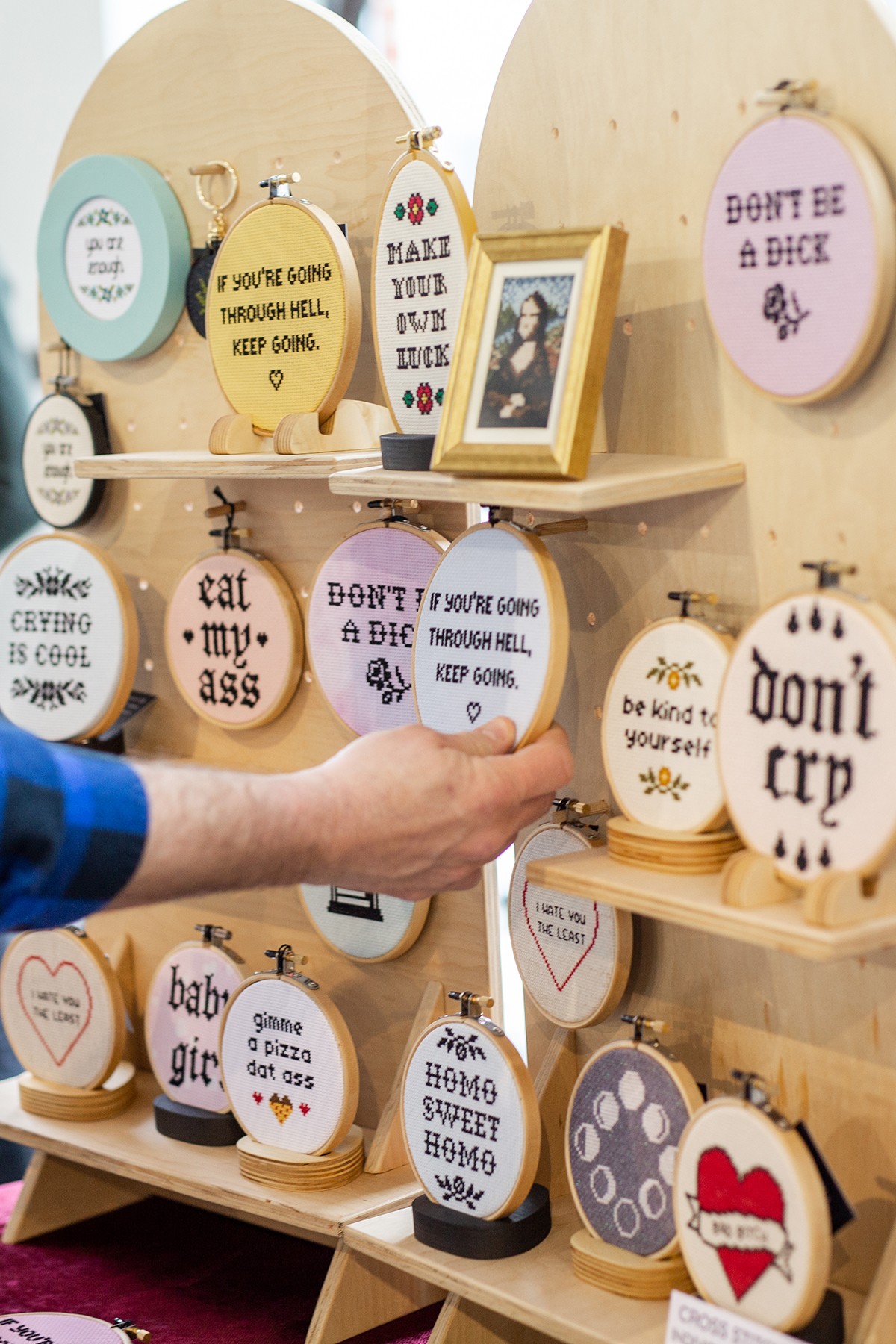
For you, what’s the most rewarding aspect of being creative?
I would have to say the most rewarding aspect of being an artist is connecting with folks through my art. Whether it be my “Live Fast Eat Ass” cross stitch that promotes sex positivity; my “Mind Your Own Uterus” cross stitch that has brings together those with female assigned reproductive systems; or my “You Are Enough” cross stitch that inspires self love and acceptance.
I have dozens of heart-warming stories where folks have really connected with myself and my art that I will never forget. But there is one story that really stands out the most for me when I think about what makes this so rewarding. Last year I was set up at one of my many summer art shows and there was a grandma and grandchild, probably somewhere in that pre-teen/early teen stage, that walked into my tent. They were having a discussion about their parents not being accepting of their being gender-fluid. The grandma was super supportive, offering they stay with her while their parents figure it out, taking them to doctors appointments and otherwise being a great support system as they came into their newly found identity. The teen was looking around in my booth, picked up one of my “You Are Enough” stitches, smiled and set it back down before they moved on down the row.
A few minutes later the grandma sneakily came back and purchased that “You Are Enough” stitch, telling me about her grandchild she was with and the predicament they faced with their parents, teachers and other family. As the grandma was leaving my tent, they rejoined their grandma and I got to watch this tender moment unfold between grandma and grandchild as she handed over the cross stitch. They hugged each other and cried while grandma reassured them that yes, they are enough, they always will be and they will always be loved.
I don’t think there’s anything more rewarding as an artist than having something so beautiful happen because of your art.
Contact Info:
- Website: www.CryBaby-CrossStitch.com
- Instagram: @CryBabyCrossStitch
Image Credits
Sarah Heppell Photography and Step Out Buffalo


